For the region of Tuscany we had a fun energetic Chef named Marco Stabile who owns one of the top rated restaurants in Florence, Ora di Aria. We did one day of traditional Tuscan cooking and one day of modern interpretations of classic Tuscan combinations, and as you can see from the pictures we did some cool stuff. Marco really stressed knowing tradition and classical dishes before you started trying to changes dishes, create fusion dishes, or experiment without foundation. He stated “everything starts with tradition, and then you can evolve from that historical point”. He also said it was “molto importante to study the history of the town you work in” so you know what your customers likes, dislikes, and culture expectations are. “Tendencies are tied to the past …everything is tied together, know the history, but add your own style-understand the past –it helps you look to the future”. Marco had spent time working in a Michelin two star restaurant and is well versed in both classical and modern cuisines.
Although the Chianina is known for its Bistecca, Marco said he prefers its meat braised or Bolito because the animal is a very strong breed and develops muscle so the long slow cooking works well with its meat. He stated that Tuscans don’t like their desserts too sweet, and two of the most popular Cantuccini and Brutti ma Buoni are not overly sweet, but they do like to consume them particularly the Cantuccini with Vin Santo, a sweet dessert wine. Panforte di Siena is very sweet, but he said in Italy is usually just eaten around Christmas. Marco explained that the north of Tuscany is influenced by Bologna and uses fresh egg pasta, south of Florence the region does not use much fresh pasta and uses more vegetables, stews and grilled meats. The famous soup of the region Ribollita has many variations and the ingredients change with the season. Marco did a cool thing and took parmesan rind that had maybe a 1/8 inch of cheese on it and baked them until they were puffed up and crunchy, and really tasty. He said it is cool to dice them and use them for croutons.
Tuscany gets all the press, and it is easy to get jaded and think it is overblown. But, there is something about the region that is regal and distinct. Driving through Tuscany you feel as if the countryside has been manicured and prepared for your visit. Perhaps it is the contrast of the beautiful golden rolling hills, the tall coned shaped green Cypress trees that jut high above the fields, the hilltop towns, and the old stone farmhouses. Whatever it is the region has an undeniable presence.
The Etruscans cultivated the land in what is now Tuscany 2500 years ago. Today the region is full of tradition and produces many products that are known throughout the world. Although the region is rich in gastronomic products it is known for dishes which are humble, simple in composition, and often making use of “leftovers”. One notable exception to this rule is the famous behemoth Bistecca alla Fiorentina, the great grilled steak from the Chianina cow. Tuscany is known for excellent cured meats like salumi, prosciutto, and lardo de Colonnata from Carrara, a delectable cured fat that melts from your body temperature as you eat. There has also been a revival of a breed of pig called the Cinta Senese which is considered to have superior quality meat for curing, in our region we may compare the qualities of the Ossabaw with the Cinta Senese. The cheese produced in Tuscany tends to be sheep’s milk cheese and can range from fresh and delicate to aged and piccante.
Most people know about Tuscan bread and how they do not use salt in their bread. One reason for this is because it goes well with the salty salami which is produced in the region. The other reason behind making the bread without salt is for preservation purposes. If there is salt in the bread, the salt attracts moisture and eventually the bread gets soft from absorbing moisture. Without the salt the bread will last for several days, and eventually dry. Traditionally bread was made once a week, on Sundays. A little bit of fresh bread would be eaten on Sunday, and then for the next couple of days. By the end of the week the bread was getting dry and hard, therefore dishes were developed to utilize the bread with various other seasonal ingredients thus we find recipes like Panzanella, Ribolita or Minestra di Pane, and Pappa al Pomodoro.
The entire world knows that Tuscany is synonymous with Chianti, but the region also produces many other fine wines like Brunello and Rosso di Montalcino, Vino Nobile di Montipulciano, Carmignano, Morellino di Scansano, Vernacchia di San Gimignano, and the Bologheri area of Tuscany is known as the Italian Bordeaux because of its production of big red wines.
There is not enough space here to discuss all that Tuscany has to offer, but other common products include excellent olive oil, Farro (Spelt Wheat), a wide array of fresh and dried beans, chicken, pigeon, and rabbit, and even fish such as prawns, squid, octopus, and cuttlefish as Tuscany has miles of coastline. We made: Carabaccia, Panzanella, Tortell di Patate, Cavolo Nero Con le Fete, Crostini di Fegatini al Vin Santo, Farinata con Cavolo Nero, Minestra di Pane, Pappa al Pomodoro, Ravioli Gnudi alla Fiorentina, Trippa alla Fiorentina, Fagioli all’ Uccelletto, Cantuccini di Prato, Brutti ma Buoni, Ricciarelli di Siena, Panforte di Siena, Carciofo Alla Toscana Animelle di Vitello Croccanti, Tortelli di Vongole e Zucchine con Fonduta, Farro con Petto di Piccione Arancia e Olive Amare, Uovo di Paolo Parisi, Tartara di Tonno con Falso Uovo di Baccala, Pomodoro Confit Ripieno di Burrata, emulsion tiepida di basilico e pepe di Sezchouan, Grissini all’ Origano Fresco
Subscribe to:
Post Comments (Atom)




































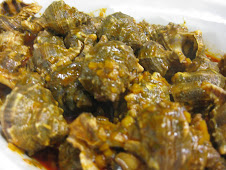




























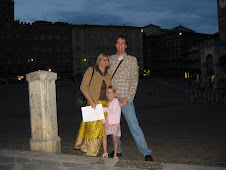









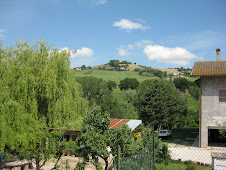

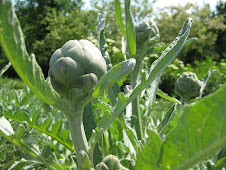


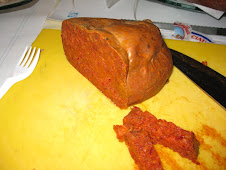
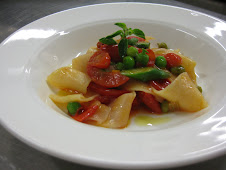
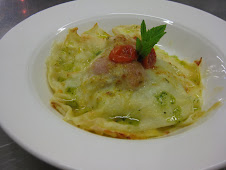
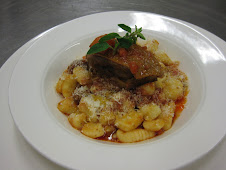


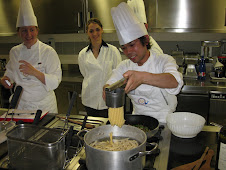





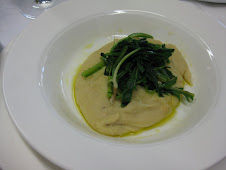

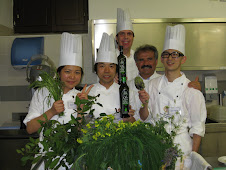
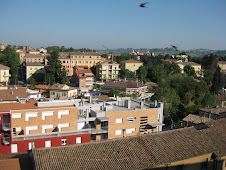


No comments:
Post a Comment